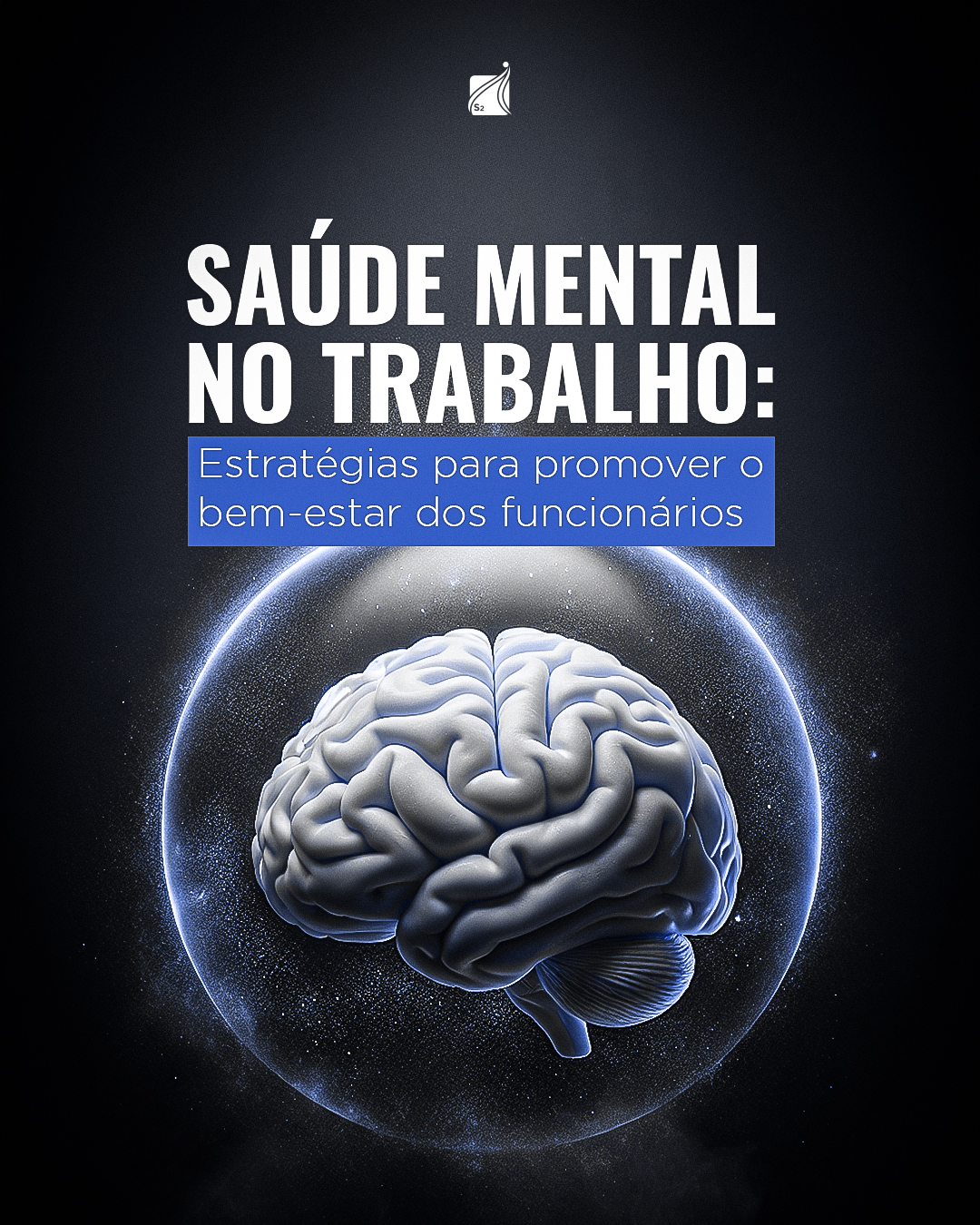
Browse topics
Organizations are in a constant quest to increase their efficiency. productivity and efficiency. To do this, they apply different strategies and tools capable of maximizing results from the resources currently available. As well as understanding the logic of behavioral profiles.
All employees have characteristics that fit them within a specific profile, and understanding these profiles helps to structure more cohesive and productive teams, capable of delivering a more interesting return.
In this guide, we'll give you a complete overview of the 4 types of behavioral profiles, showing you more about each profile and how this analysis can help your company.
Want to understand the subject better? Then read on!
What influence do the different types of behavioral profile have on companies?
In the business context, the behavioral profile of both employees and leaders has a major influence on the performance of teams and the success of organizations.
Basically, it influences the way people communicate, make decisions, deal with conflicts and carry out tasks.
An individual with a dominant profile tends to be more aggressive and competitive, while someone with an influential profile is more sociable and outgoing.
These differences can lead to conflicts and communication difficulties between team members. On the other hand, when behavioral profiles are understood and respected, they can contribute to the company's success.
8 benefits of analyzing behavioral profile types
By evaluating behavioral profiles, the company achieves various benefits and manages to extract the maximum potential that each employee offers, optimizing talent management.
Learn more about each of these advantages and why behavioral profile analysis can make a difference for your organization.
1. REDUCING TURNOVER
By analyzing the behavioral profile, you can hire people who are more committed to organizational culture, with personality traits that relate to the company's environment and the role that the professional will perform.
This alignment favors the retention of the employee, who will develop an identification and a sense of belonging.
2. IMPROVING THE ORGANIZATIONAL CLIMATE
With the decrease in turnover and the increased sense of belonging promoted by the correct allocation of employees, the organizational climate is greatly improved. This positive environment promotes greater employee commitment.
The first step to achieving this alignment is to clearly identify the organizational culture and the desired behaviours. From there, it is possible to recruit and select based on this information or to promote the development of workers who have already been hired.
3. REDUCTION IN EXPENSES
When there is no behavioral alignment between the employee and the company or the position taken on, employee retention is low, forcing the organization to carry out new selection processes and integration programs.
These initiatives have a major financial impact on the company. That's why behavioral evaluation is also a measure that promotes the intelligent use of the organization's money.
4. INCREASED PRODUCTIVITY
By identifying behavioral profiles, it is possible to allocate professionals according to their competencies, thus placing them in roles where they can perform better and deliver better results.
This brings a considerable gain in team productivity, even allowing teams to be structured according to these characteristics.
5. IMPROVED MOTIVATION
By working in roles that are more consistent with their skills, employees are much more motivated, bringing tangible results to the organization and demonstrating greater engagement.
In addition, there is greater satisfaction in carrying out tasks. This has an impact on employee retention, career development and even on employer branding.
6. IMPROVED PEOPLE MANAGEMENT
By identifying profiles, HR is able to distinguish what can be worked on in the professional, thus managing to make a people management more targeted and with a higher success rate. This well-planned management is totally goal-oriented and makes the best use of employees' skills.
7. DEVELOPMENT OF THE CAREER PLAN
One career plan A well-structured job profile should take into account the competencies of employees when filling positions. We can cite as an example the consideration of a person without good communication skills for a profile of leadership - this combination is unlikely to be effective.
Therefore, by assessing behavioral profiles, it is possible to come up with a more realistic and applicable career plan.
8. MORE PRECISE TRAINING
The training are important for promoting individual development, offering the necessary inputs for employees to do a better job. When employees' skills are identified, it's possible to have these training sessions address precisely the gaps that are open in the company.
For example, if there is a need to fill a project coordination position, it is possible to take professionals who already have some of the necessary characteristics and develop the others, making them the ideal person to carry out the job.
4 types of behavioral profiles and their characteristics
We can mention 4 main behavioral profiles which can be applied to better understand the company's workforce and its nuances.
Of course, individuals differ from one another and can have different characteristics, which must be respected. But in general, these are the 4 profile models into which we can fit professionals.
1. ANALYST
People with an analyst profile are attentive to detail, linked to security and perfectionism. They also suffer the most from excessive pressure.
Able to carry out their work with surgical precision, analysts are great for forming teams in which a high degree of specialization is required. However, they spend a lot of time on these small details and can get a bit lost if there is no well-structured leadership or direction.
Analysts also find it difficult to deal with tight deadlines, precisely because they don't have enough time to follow the methodologies to the letter. Another negative characteristic is the difficulty of integrating with others.
2. COMMUNICATOR
The communicator profile brings interesting characteristics such as influence, empathy and creativity. Workers who fit this profile are excellent at promoting team integration and contribute greatly to building a positive organizational climate.
As negative points, these people find it difficult to meet deadlines and standards, and may even ignore superior orders. Organization is another weakness of professionals with a communicator profile.
3. EXECUTOR
The executors have a strong commitment to resultsThey are objective and straightforward, concentrate their efforts on completing tasks and don't waste time. Their determination and ambition help the team to achieve or even exceed their goals.
Although this may seem like the type of professional you should count on the most in your team, too many people with an executor profile can cause integration problems, since their extreme self-confidence often leads them to act alone.
The presence of executors is important to ensure productivity and project delivery, but balance is essential to maintain unity within the team.
4. PLANNER
People with the planner profile tend to be calm, reliable and easy to get along with. These professionals usually work calmly, but they may need a longer project delivery time due to the need to structure a new, more promising strategy.
Planners are excellent mediators; after all, they tend to find a balance within the team. They are likely to stabilize conflicts and monitor work closely, being excellent channels for follow-up and feedback.
Their disadvantages are a certain difficulty in delivering more interesting results and a certain fear of making decisions and taking the initiative, often requiring the interference of a more dominant profile. They also tend to be pessimistic and react negatively when something gets out of hand.
Is there a better type of behavioral profile to hire?
There is no ideal behavioral profile for all companies or positions. Each organization and position requires specific skills and competencies, which can be found in different behavioral profiles.
In this sense, a company operating in a highly competitive market can benefit from employees with a dominant profile, who are more assertive in the pursuit of results.
On the other hand, a company that prioritizes customer service may prefer employees with an influential profile, who are more communicative and sociable.
In this way, managers who opt for a diversity of behavioral profiles bring benefits to the company. They end up stimulating creativity, innovation and collaboration between team members.
How do you deal with different types of behavioral profiles in the same team?
Dealing with different types of behavioral profiles in the same team can be challenging, but it is essential for the company's success.
After all, behavioral diversity can bring a wealth of ideas and perspectives, provided it is well managed.
To deal with this diversityIt is important that the company establishes a culture of respect and tolerance.
In addition, it is important for the company to offer training and development programs that help employees understand and respect different behavioral profiles.
How to take a behavioral profile test?
Taking a behavioral profile test is an interesting way of getting to know your personal and professional characteristics.
There are several tools available, but it is important to choose one that is reliable and recognized in the market.
One of the best-known methodologies is the DISCwhich is based on four behavioral dimensions: Dominance, Influence, Stability and Conformity.
To take the DISC test, you need to answer a specific questionnaire that assesses the individual's personality traits.
Another widely used tool is the MBTI (Myers-Briggs Type Indicator), which is based on four behavioral dimensions: Extroversion or Introversion, Sensation or Intuition, Thought or Feeling, Judgment or Perception.
O MBTI is also applied through questionnaires and aims to identify the individual's personal preferences.
HOW TO IDENTIFY EMPLOYEE CHARACTERISTICS?
As características que compõem o perfil comportamental podem ser percebidas sob diversas óticas, o que abre margem até mesmo para interpretações e definições equivocadas.
Por isso, é necessário ter o máximo de cuidado na hora de realizar essa definição, que deve ser feita sem pré-julgamentos e de maneira isenta.
Conheça algumas das abordagens que podemos adotar para esse diagnóstico.
1. FAÇA TESTES DE COMPORTAMENTO
Existem diferentes métodos que ajudam a avaliar o perfil comportamental dos profissionais, boa parte acompanhados de um psicólogo especializado capaz de fazer uma análise precisa e bem apurada.
Esses testes agrupam questões objetivas e subjetivas, como questionários, entrevistas comportamentais, dinâmicas, entre outras estratégias de identificação.
2. OBSERVE AS ATITUDES
A princípio muitas das características presentes nos perfis comportamentais conseguimos observar de forma cuidadosa e atenta, evidenciando aspectos como a capacidade de comunicação, a atenção aos detalhes e o nível de produtividade de cada um.
Essas considerações nem sempre estão evidentes durante a entrevista do processo seletivo, conseguimos observar só após algumas semanas de trabalho, quando o profissional começa a se habituar ao local e passa a agir de maneira mais autêntica e natural.
Por isso, vale a pena estender a aplicação dos perfis comportamentais para todos os funcionários da empresa. Assim, identificamos traços de personalidade ao colocá-los nas funções mais alinhadas com esses aspectos, conseguindo um melhor aproveitamento da mão de obra.
3. CONDUZA ENTREVISTAS COMPORTAMENTAIS
As entrevistas comportamentais ajudam a entender como o profissional se coloca dentro de situações concretas, avaliando assim sua competência e experiência e possíveis reações em circunstâncias reais.
Uma metodologia bastante conhecida é a entrevista STAR, na qual as respostas dadas pelo funcionário passam por aspectos representados por cada letra do termo que identifica o método. São eles:
- S (situação): como o evento ocorreu e qual o seu contexto;
- T (tarefa): o que o avaliado precisava ter feito;
- A (ação): quais foram as atitudes tomadas para resolver o problema;
- R (resultado): como os resultados foram alcançados dentro do cenário e das ações adotadas.
Essa metodologia ajuda a dar uma visão bem clara do comportamento do profissional diante de perguntas, que podemos citar: “como você resolveu uma situação de crise?”, ou “como você lida com conflitos no local de trabalho?”.
4. CONTRATE CONSULTORIA ESPECIALIZADA
Apesar do vasto material sobre o assunto e da presença de profissionais qualificados no RH da sua empresa, a identificação dos perfis comportamentais pode não ser uma tarefa fácil. Para ajudar nisso, vale a pena contar com a ajuda de empresas especializadas, capazes de fazer esse diagnóstico com precisão.
Algumas possuem esse trabalho tão bem estruturado que conseguem não só fazer a avaliação de competências, como também identificar a disposição de envolvimento com fraudes e até mesmo com acidentes laborais.
Vale a pena contar com a ajuda desses profissionais para fazer uma análise comportamental mais precisa e confiável, capaz de embasar os diversos processos internos relacionados à gestão de pessoas.
5 USE A TECNOLOGIA
A tecnologia é uma grande aliada na hora de avaliar os perfis comportamentais, trazendo ferramentas que ajudam na aplicação de testes e conferência de resultados. Esses softwares tornam o trabalho mais interativo e, em alguns casos, usam até técnicas de gamificação para deixar o avaliado mais à vontade e obter respostas fidedignas.
Se a sua empresa decidir terceirizar esse trabalho, verifique se o fornecedor trabalha com soluções tecnológicas para apoiar esse diagnóstico.
A compreensão da importância da análise dos perfis comportamentais é essencial para um trabalho de administração de talentos bem sucedido, capaz de identificar como um profissional pode colaborar com a empresa, e direcionar o desenvolvimento de habilidades de acordo com os objetivos definidos.
Algumas organizações chegam a privilegiar a contratação de pessoas com as competências comportamentais desejadas, em detrimento aos conhecimentos técnicos. Isso ocorre porque esses conhecimentos podem ser adquiridos internamente e devem ser renovados o tempo todo, enquanto as habilidades comportamentais possuem um desenvolvimento mais lento. Os funcionários que já as possuem conseguem se adaptar melhor à empresa, aos colegas e à rotina, desenvolvendo um melhor trabalho.
Conheça a S2
A S2 Consultoria está há 5 anos no mercado e são especialistas em compliance com foco na dimensão humana do risco (15% do processo é feito por IA, especialistas que validam os testes, a situação de risco, experiência). Identificam, desenvolvem e restabelecem a resiliência dos profissionais em suas organizações. Previnem comportamentos antiéticos de forma empática e cuidadosa, respeitando a individualidade do ser humano e reativo (entrevistas investigativas).
Gostou do conteúdo? Aproveite e conheça o nosso teste de integridade, o PIR, que pode ajudar a reduzir os problemas éticos da sua empresa.


